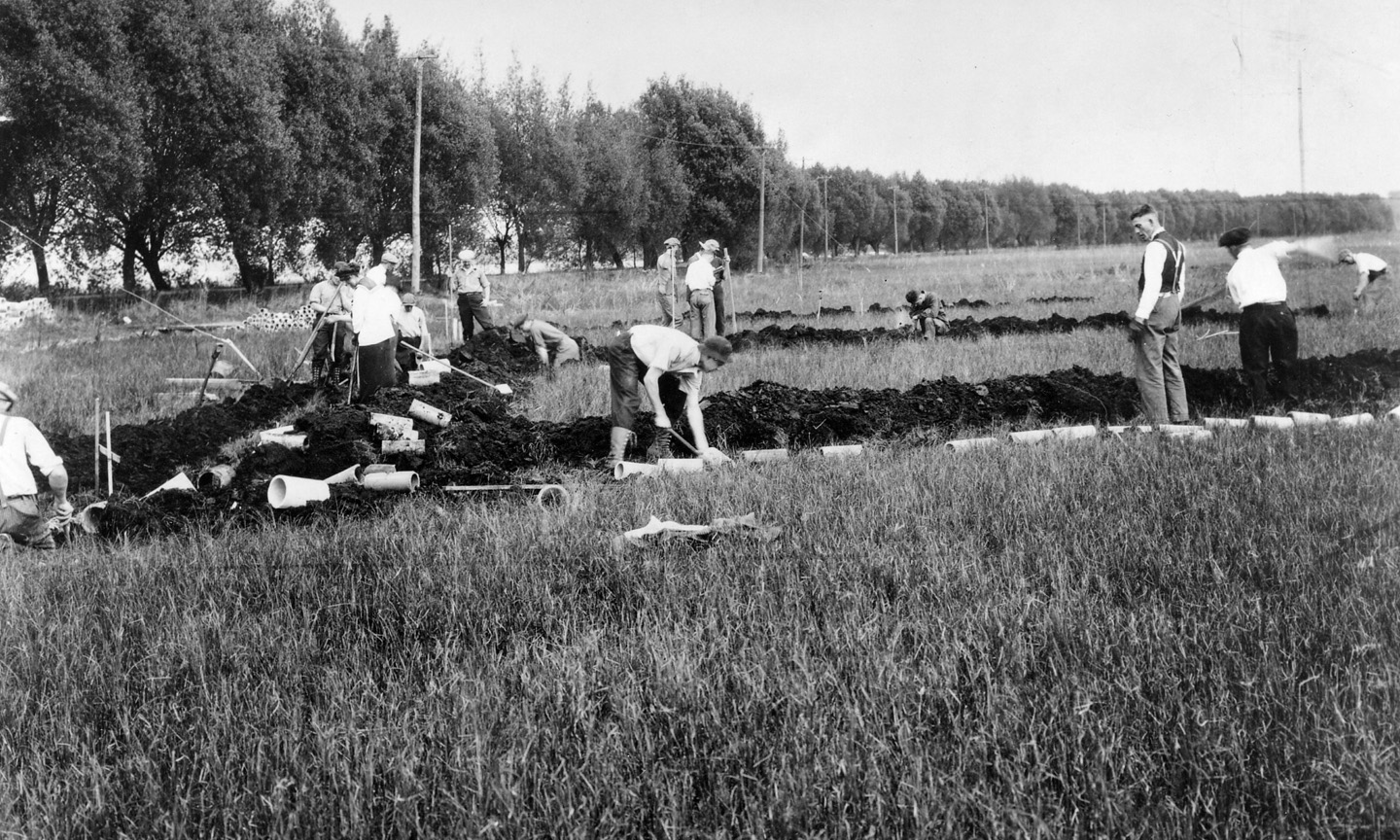How the Midwest Lost Its Wetlands
When Louis Joliet and Father Jacques Marquette first explored the Illinois River in 1673, they noted the fertility of the soil and the lush vegetation fed by abundant water. Wetlands were once a dominant feature of the state’s landscape, but more than 90% have been lost over the centuries.
So where did all that water go and how did it move? The answers are: downstream, and through drainage ditches and drain tiles.
Different sizes of clay drain tiles removed from a TWI restoration site at Midewin National Tallgrass Prairie.
Settlers dug drainage ditches and laid drainage tiles (underground pipes) to quickly and efficiently move water off the land into local streams and rivers. Soon much of the Illinois landscape—once peppered with depressions that retained water—was dry for farming and other development.
Drainage ditches and drain tiles work by capitalizing on one of water’s key characteristics, which is that water always seeks the path of least resistance. Its make-up creates strong attraction between molecules so that one droplet will “pull” another. Thus, farmers were able to dig straight ditches that pulled water quickly off their land. They then improved on this basic idea by moving the ditches underground, using clay drain tiles. Draining the land for residential or urban development also became common and by 1935 there were enough drain tiles in Illinois to circle the globe six times. Drain tiles continue to be installed today, though they are usually now made of plastic.
Map showing historic drain tiles at the Dixon Waterfowl Refuge. Nearly all the drain tiles have now been disabled.
At the Wetlands Initiative one of the first steps in our restoration projects is to locate and remove or disable any buried drain tiles at the site. For example, Hennepin & Hopper Lakes at the Dixon Waterfowl Refuge had been drained for farming for nearly a century before restoration began in 2001. The site was crisscrossed by a network of 40 miles of clay drain tiles that fed into a system of drainage ditches leading to a pump. This pump ran 365 days a year, draining nearly 9 million gallons of water per day into the Illinois River. When TWI disabled drain tiles and turned off the pump, the former lakes refilled in just three months through a combination of rainwater and groundwater. They once again provide sanctuary for tens of thousands of migrating waterfowl and habitat for a huge diversity of aquatic birds, fish, insects, and other wildlife.
The Dixon Refuge and other TWI projects show that it is possible to bring back healthy, functioning wetland ecosystems even after long periods of drainage and degradation.

